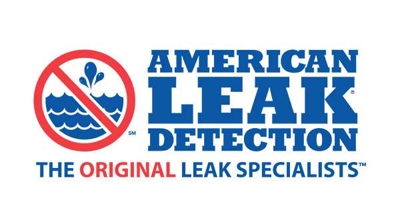During the life of your pool, there will probably be a leak.
Unaddressed, a leak from a pool will do great damage, including undermining the concrete deck around the pool.
Some leaks never surface. There is no wet spot. Where does the water go? It stays underground.
So, if you have one or more symptoms of a leak it is prudent to do some investigation.
Let’s start with the basics. What are some observable symptoms of a leak?
- Your pool loses more than a ¼ inch of water a day
- There are cracks in or around the pool deck
- You need to add water more than once a week
- If you have an autofill, your water bill increases
- Grass around the area is soggy
- Your pool deck is sinking or lifting
- The DIY Bucket Test indicates there is a leak
What is a Bucket Test?
The Most Common Types Of Leaks
- Structure or shell leaks
- Pool plumbing leaks
- Huge water loss leaks
1. Structure or shell leaks
If a pool leaks at exactly the same rate whether the pump is on or off, the leak problem is likely in the structure of the pool.
What do we mean by the structure of the pool? Basically everything visible on the inside of the pool. The material of the pool itself: vinyl liners, concrete, or gunite to name a few. The skimmer boxes, the return fittings, the main drain assembly, or any fittings that attach to the underground plumbing on the other side of the pool wall. Lights. Hydrostatic valves. All of these can leak.
Vinyl liners are subject to tears and cuts that leak. Cleaning tools, vacuums, and sharp edges on pool toys can cause liner tears and holes. Doggie paws and vinyl liner pools do not mix well. Pool chemicals, sun, and just wear and tear and age cause tears and holes in a vinyl liner pool. Most repairs to the vinyl are made with vinyl patches. The average life of a vinyl liner is approximately ten years but there does come a point when patching is no longer effective and the liner needs to be replaced.
Concrete, gunite and fiberglass shells can develop cracks. Cracks are usually caused by soil movement, settling, and hydrostatic and soil pressure on the outside of the pool. Not all cracks leak (some are just surface cracks) but many do leak. Most crack repair is done with epoxy or caulk. Many crack repairs are temporary as the forces that caused the original crack have not changed and cause the crack to reopen. If there are numerous cracks in the pool, once one crack is sealed another existing crack may begin to leak. This is because of hydrostatic pressure. Once the soil is saturated on the outside of the pool, no more water can leak from the pool because it has nowhere to go. The hydrostatic pressure on the outside of the pool is too great. After one crack is sealed another crack may begin to leak because the soil outside the pool is now drier and can accept additional water. Sometimes it takes more than one trip to get all the leaks. This is especially true in pools with joints, where the side walls meets the floor.
Skimmer boxes and jet fittings are also vulnerable to leaks. Skimmers can develop cracks just like pool structures can. Skimmer boxes can be repaired using epoxy or caulking. The jet fittings in the pool wall can also leak. Normally a leaking jet fitting will need to be replaced.
Pool lights are usually installed in a stainless-steel housing (or niche) with a conduit exiting the back of the light carrying the light cord to the electrical junction box. This conduit is not sealed and it can crack from settling soil just like the pool structure itself. A majority of light leaks are in this conduit. Sometimes the conduit can be sealed with epoxy from inside the pool. These are considered temporary repairs (although some of these repairs may last for years). The only permanent repair is to replace the conduit itself which requires opening the pool deck to gain access to the conduit. Occasionally a light leak is on the outside of the light, usually in the pool structure area around or under the faceplate for the light. Epoxy repair is usually a remedy for this. Rarely is a light leak actually in the niche (the stainless-steel housing).
How do we find structure or shell leaks? By getting in the pool and checking.

2. Pool plumbing leaks
If the pool leaks more when the pump is on, the leak is probably in the underground plumbing.
A pool has two main plumbing systems. The suction system and the pressurized system. The suction system pulls water from the pool and brings it back to the filter. Skimmer and main drain lines are suction plumbing. The pressurized plumbing system pumps water back to the pool after it has passed through the filter. The filtered water returns to the pool through the jet (or return) inlets. The plumbing that returns the water from the filter to the pool is often referred to as return plumbing. Most of a pool’s plumbing system is underground.
Suction plumbing leaks (skimmer or main drain) can be water or air leaks. It can be difficult to determine which type of leak it is until the pipe has been excavated. If it is a water leak, sometimes the water loss is relatively small. If it is an air leak, there will often be other symptoms such as the inability to keep prime on the pump or excessive bubbles coming out of the return fittings. If there is a leak occurring on the main drain line in the section under the pool floor, the pool may have to be drained to find that leak, since the main drain plumbing runs under the pool floor for a distance on its way back to the pump.
Pressurized (return) plumbing leaks usually leak a lot of water, especially when the pump is on. If the water loss is larger when the pump is running, the likely culprit is the underground return line. However, a leak in the return or jet fitting will also leak at a greater rate when the pump is on (there is pressure in the system). How do we find pool plumbing leaks? The first step is to pressure test the line. If the line loses pressure an electronic leak detection is performed and the leak is located and marked above ground.
3. Huge water loss leaks
We often get panicked calls that go something like this: “Help! I called your office about my pool leak. They told me the pool needs to be clean and clear and full. I have a hose running full blast and I can’t even make a dent. I can’t raise the pool level.”
Often a leak this big is due to a malfunction in one of two valves. Many, but not all pools have these valves. These valves are the hydrostatic valve and the multiport valve.
Hydrostatic valve leaks. A hydrostatic valve is a mechanical valve. Customers often think because it is a valve, it is part of the pool plumbing. It is not. The hydrostatic valve is located in the floor of the pool, usually underneath the main drain grate. Its function is to equalize the hydrostatic pressure on the outside of the pool with the hydrostatic pressure on the inside of the pool. What is hydrostatic pressure? In the case of a pool, there are two different hydrostatic pressures. On the inside of the pool, it is the pressure exerted against the walls and floor by the weight of the water. On the outside of the pool it is the force of the groundwater against the walls and floor of the pool. Hydrostatic pressure is the“why” in “why you shouldnever drain your pool yourself." Pools should be drained by professionals to perform maintenance such as cleaning or painting the pool. Often while the pool is empty, the valve opens to equalize the hydrostatic pressure from the outside of the pool. The pool is refilled and the valve remains in the open position, usually due to a small amount of debris lodged in the valve. These valves can fail even if the pool has not been drained. Large amounts of water escape through this open valve. When the hydrostatic valve is leaking, the leak technician cleans and tries to reseat the valve. If this does not work a new valve is installed. Water must be in the pool to enable the technician to check if the valve will work properly, but it may not be necessary to have the pool filled to a normal operating level.
Multiport valve leaks. The multiport valve is also not part of the plumbing. It is located on the filter tank either on the top or the side. It has various control settings that allow the pump to backwash, drain and perform other maintenance functions. If there is a leak caused by a malfunction in the multiport valve, the pool will experience a very large loss of water when the “filter” setting is selected.This valve can usually be rebuilt or replaced.
Frequently Asked Questions
I don’t have a 5- gallon bucket to do a bucket test. Can I use a household bucket? (normally 2-3 gallons)
- A smaller bucket may be used, but it won’t be as accurate. Nothing smaller than a 2-3-gallon bucket should be used.
I am losing a lot of water. Do I need to do a bucket test?
- No, if you are losing a lot of water, the bucket test is not necessary.
Why is my pool leaking at a faster rate when I fill it to the top of the skimmer and then as the water drops, the leak rate drops to a slower rate?
- A leak can be very frustrating. Often pool owners will overfill the pool in an attempt to keep water in the skimmer and not risk damage to the pump. They will call with water loss measurements that start at 3-4 inches a day. After the pool level drops back to mid-skimmer (the normal operating level) the water loss decreases. Skimmers are designed to leak if the water level is too high. This is to aid in reducing water levels when the pool gets too full (like after a rainstorm). If you are measuring the water loss from your pool Do Not Overfill.
Why does my pool leak only sometimes?
- Remember all the talk about hydrostatic pressure? There are times a leak will not show because the soil on the outside of the pool is too saturated. A customer in the Midwestern part of the US had a pool that only experienced leaking in August when the soil around the pool was dry. A leak must be active to be found.
I did the bucket test and my pool leaks slightly more than evaporation. Can you find a leak this small?
- The normal rule of thumb is that a leak is detectable when it is greater than a ¼ inch over the evaporation rate.
You found a leak in my plumbing. After it was repaired another leak on the line was detected. Why didn’t you locate both leaks?
- Only one leak at a time can be found on a piece of pipe. Normally we can find a leak on the suction side (skimmer) plumbing and a leak on the pressurized (return) side plumbing, but not multiple leaks on either. For most pools, each skimmer and each return (jet) fitting is not plumbed back to the pump by its own piece of pipe. The piping tees underground to feed more than one skimmer or return fitting. If there is a main drain line, it usually does not tee and goes directly from the drain to the pump. So, in most cases, we can find one leak on the skimmer line, one leak on the main drain line, and one leak on the pressurized (return) line. If there are multiple leaks on any of these lines, a second leak cannot be found until the first is repaired.
Are there any issues that can impact the accuracy of a leak location on a pool plumbing leak?
- Some pool plumbing runs through the pool wall or through the pool footer. If the underground plumbing is encased in concrete (and this can also true of heavily packed clay soil around the pipe) an accurate location of the leak is challenging. We have no way of knowing this encasement exists. If you are aware your pool has these issues, please discuss this with your technician.
A leak in my pool plumbing was detected and I have not yet had it repaired. Now it seems to be leaking even more. Did the testing process increase the size of the leak in the pipe?
- After we locate a leak in the underground plumbing there may be what appears to be greater water loss or increased water surfacing. None of our testing actually makes a leak bigger. All pressure put on the pipe is well within the psi rating for the pipe. What has actually happened is our testing has cleared a path for the leak by removing debris or soil around the leak in the pipe.
I believe my leak is in the structure so why should I also want to test the plumbing systems?
- Often pool owners believe they have determined that a leak is in the plumbing or the structure and want only that element checked. We like to check everything. Often there is more than one issue and leaks can be in both the structure and the plumbing. Some structure leaks, especially those in a return fitting, can leak more when the pump is on, mimicking an underground plumbing leak. We like to be thorough. We want you to enjoy your pool and let professionals worry about diagnosing the leak or leaks.
I have a pool/spa combo and the pool has an infinity edge. Can you find leaks in more complicated pools?
- This article addresses leaks in standard, simple, in ground pools. Although many of the principles are the same, there are unique challenges presented by pool/spa combos, infinity edge pools and pools with fountains and other water features. But we can and do find leaks in all kinds of pools, including Olympic size pools, and commercial pools with slides and toys and all kind of complicated features.


